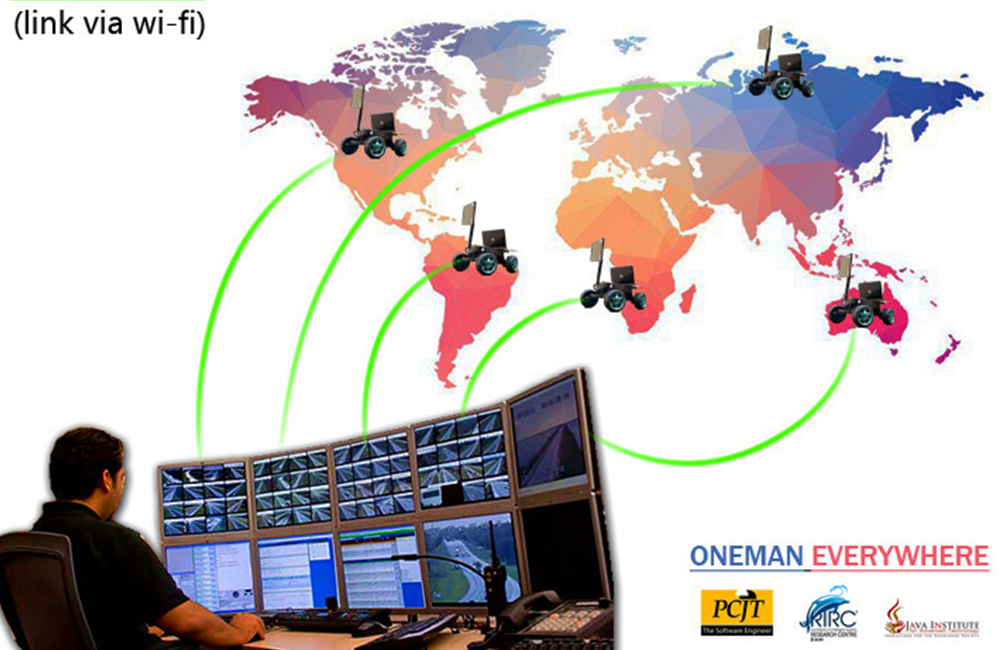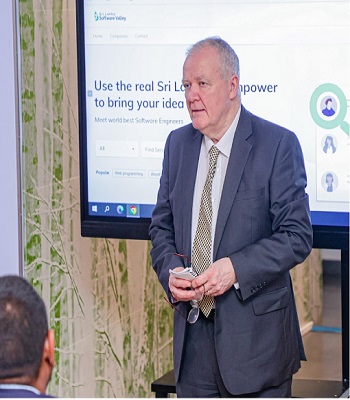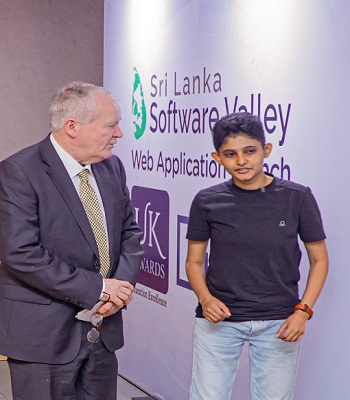Max Rover and the "One Man Everywhere" Concept
The brilliant concept of ?One Man Everywhere?, a brainchild of Mr. Bhatiya Tissera, has been actualized with the development of the highly sophisticated and innovative ?Max Rover? robotic device.
The chief team behind the development of this historic device are the extremely talented and experienced team of Electronic and Software Engineers of the Java Robotics and Intelligent Systems Research Centre, which is one of the pioneering research centers of the Java Institute for Advanced Technology.
Vision and Concept
The visionary behind the Java Institute?s Max Rover is Mr. Bhatiya Tissera, the Managing Director of the Java Institute for Advanced Technology and the Java Robotics and Intelligent Systems Research Centre.
Mr. Bhatiya Tissera?s unique vision for the Max Rover primarily includes the following significant goals:
1. To enable an individual to carry out communications with any other place in the globe.
2.To reach inaccessible and hazardous locations.
3.To connect and communicate with a voluminous number of other robots simultaneously.
4.To increase efficiency and save labour, time, and money in communication activities.
Importance and Functionality
As mentioned above, the Max Rover was designed with a unique concept in mind and the robot can achieve a number of various tasks within a wide array of fields. The primary advantage of utilising the Max Rover is the immense quantity of time, labour, as well as finances that can be saved due to the amazing efficiency and capabilities of the robot.
One of the key benefits of this technically superior device is its ability to communicate with any other person or device from any location of the world.
Furthermore, the controllers of the Max Rover can remotely control the robot via several popular and modern communication technologies, and this allows the users of the robot to accomplish a number of useful functions. This capability enhances the importance and significance of the Max Rover and allows the controllers to successfully experience the concept of ?One Man Everywhere?.
The fields and sectors in which the Max Rover will be highly useful and important are as follows:
- Communications
- Construction
- Travel and Exploration
- Military and Space
- Scientific Research.
The Max Rover is equipped with cutting-edge technology and is able to perform a number of functions. For example, the robot is able to communication with wireless communication technologies, including Wi-Fi technology. In addition, the robot is fitted with a camera and this enables the remote controlling party to observe the surroundings of the Max Rover through multiple computer systems from any place of the world. The modern communications technology of the Max Rover as well as the remote controllers enable the exchange of information, including live video feeds, between any number of groups from Sri Lanka, India, the United States, as well as any other nation. This is one of the most amazing as well as useful capabilities of this modern robotic device.
This amazing and innovative robot has the capability of reaching locations that are inaccessible as well as dangerous for humans. For example, any construction site or similar locations that could be hazardous as well as risky for humans could be easily accessed by the Max Rover.
The controller of the robot can be at a safe location while completely monitoring all activities of the robot in any location.
Similarly, the users of the Max Rover can achieve other tasks in a highly convenient as well as efficient manner. All of this functionality and importance as well as the benefits provided by the Max Rover results in the fulfilment of its concept ?One Man Everywhere?, as just one individual in just one location can accomplish given targets or tasks in multiple other locations.
Other Robotic Developments
The Max Rover is just one invention by the proficient engineers of the Java Robotics and Intelligent Systems Research Centre. A number of other modern and technologically advanced robotic devices have been developed by JRIRIC and Java Institute engineers over several years as well.





